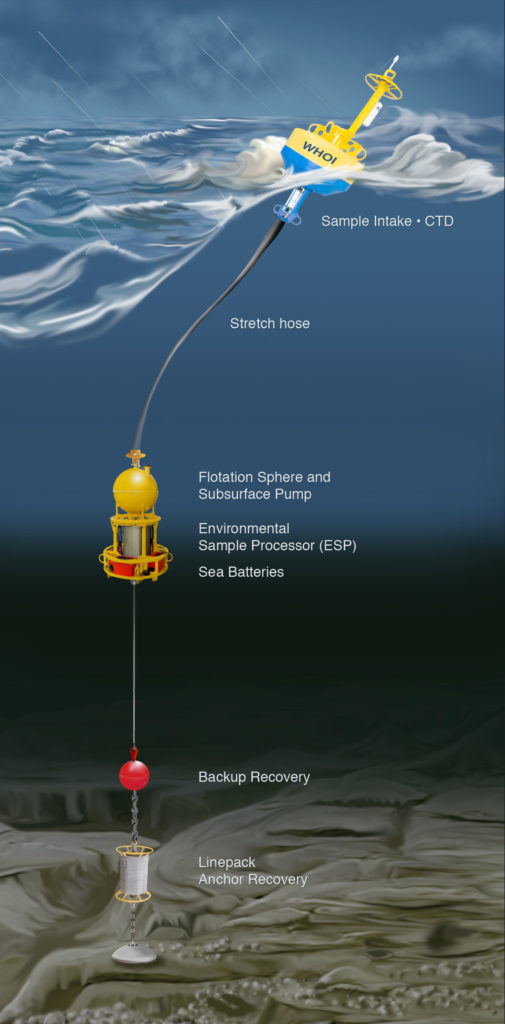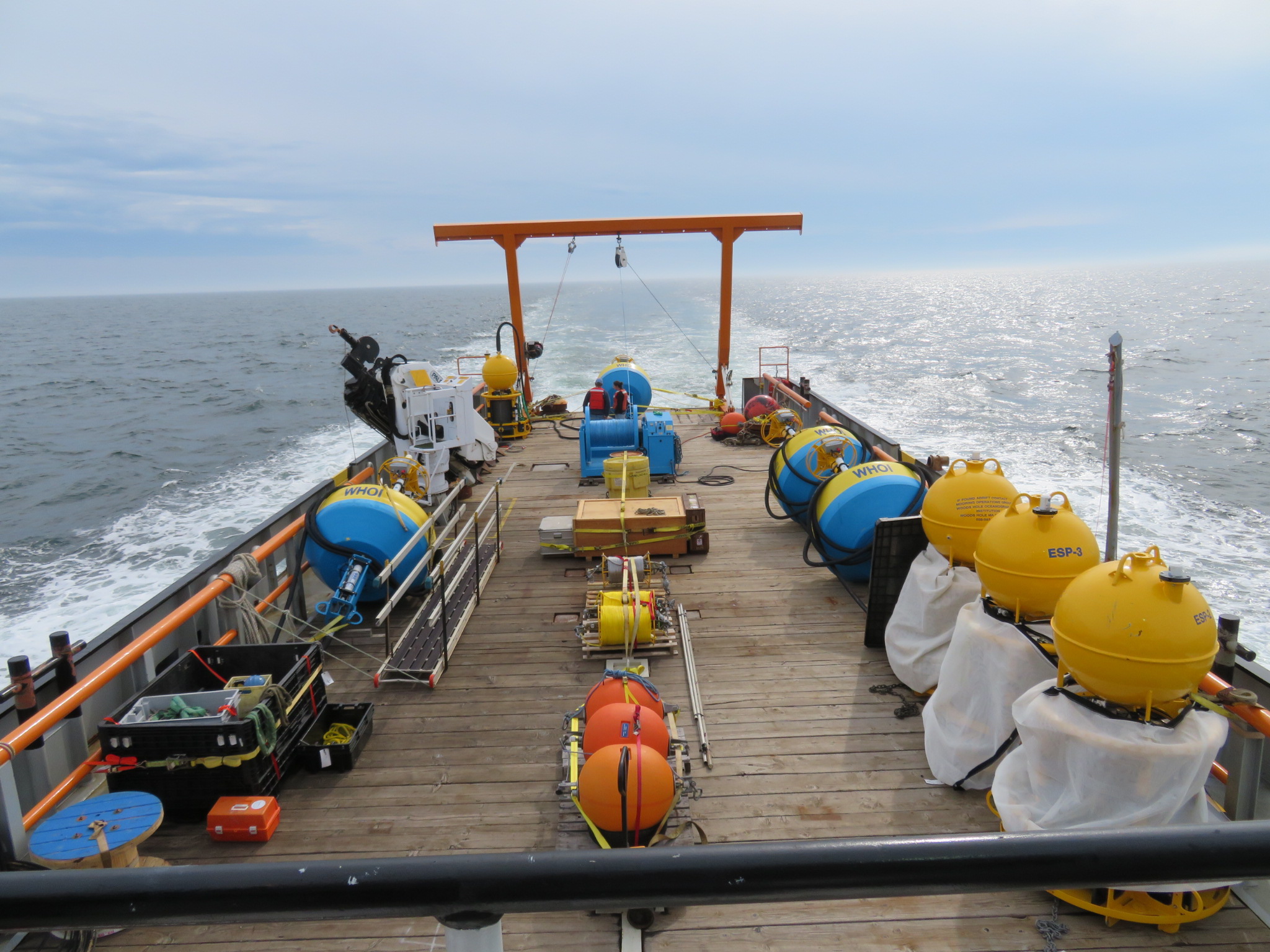Environmental Sample Processor (ESP)

A schematic of the ESP mooring assembly. (Paul Oberlander, WHOI)
Throughout the world, ocean observatories are being created to provide data needed to study and manage many coastal phenomena and processes. A critical aspect of this effort is the availability of sensors for a wide range of parameters – physical, chemical, and biological. Compared to physical oceanographic sensors such as those for temperature, conductivity, depth, and motion, however, biological sensing systems are in their infancy. This reflects in part the enormous complexity of the biota, with tens of thousands of species spanning a vast range of size and function.
The ESP can be deployed subsurface for months at a time. It collects and processes water samples, identifies and enumerates harmful algal bloom (HAB) species, pathogens, and other microorganisms as well as the concentration of specific metabolites such as algal toxins, and relays the data to shore. To foster greater flexibility, the ESP has been designed with a microfluidic block which allows analytical modules of different types (e.g., quantitative PCR) to be placed downstream of the water processing core. A wide variety of organisms and chemicals of interest to science and society can be analyzed over time scales that are not otherwise possible, all in automated fashion. Potential applications of this instrument are numerous and diverse.
Currently, we are maintaining deployments of ESP sensors in the Gulf of Maine, where they are being used to monitor the progression of annual HAB events.

Research Papers
- Doucette et al. 2009. emote subsurface detection of the algal toxin domoic acid onboard the Environmental Sample Processor: assay development and field trials
- Greenfield et al. 2006. Application of the Environmental Sample Processor (ESP) methodology for quantifying Pseudo-nitzschia australis using ribosomal RNA-targeted probes in sandwich fluorescent in situ hybridization
- Greenfield et al. 2008. Field applications of the second-generation Environmental Sample Processor (ESP) for remote detection of harmful algae
- Scholin et al. 2009. Remote detection of marine microbes, small invertebrates, harmful algae and biotoxins using the Environmental Sample Processor (ESP)